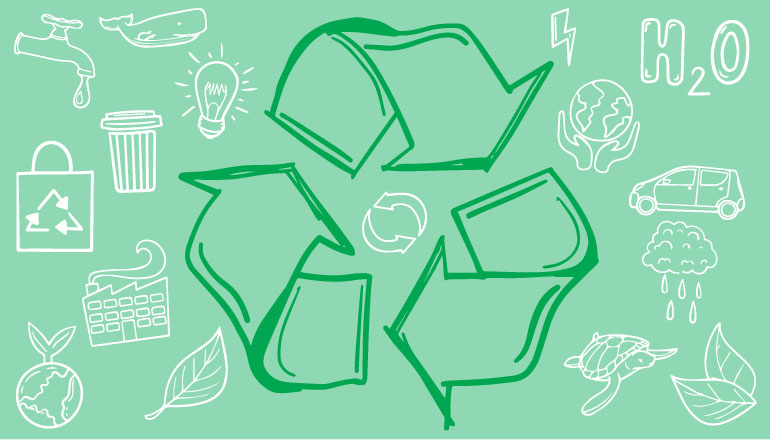Recycling is an important practice that can help to reduce waste and conserve resources. By recycling materials such as paper, plastics, metals, and glass, we can reduce the amount of waste that ends up in landfills and reduce our overall impact on the environment. Recycling can be done at home and in the workplace, and it is a great way to get started on living a more sustainable lifestyle. In this article, we will discuss how to get started with recycling at home and in the workplace.
Recycling at Home:
- Learn the Recycling Guidelines: The first step in recycling at home is to learn the recycling guidelines for your area. Different municipalities have different guidelines for what materials can be recycled and how they should be prepared. You can check your local government website or recycling center for information on what can be recycled and how.
- Set up Recycling Bins: Once you know what can be recycled, set up recycling bins in your home. You can use separate bins for different materials or have one large bin for all recyclables. Label each bin with what materials can be recycled in it. You can also purchase recycling bins from a local store or online.
- Educate your Family: Educate your family on the importance of recycling and how to do it properly. Teach them what materials can be recycled and how to prepare them for recycling. Encourage them to recycle and make it a part of your family’s routine.
- Reduce Waste: Reduce waste by buying products with less packaging or choosing reusable products instead of disposable ones. This will help to reduce the amount of waste you generate and make recycling easier.
- Monitor and Maintain: Monitor and maintain your recycling bins regularly to ensure they are not contaminated with non-recyclable materials. Remove any non-recyclable materials and rinse out containers before placing them in the bin.
Recycling at the Workplace:
- Get Support from Management: Getting support from management is important for successful workplace recycling. Talk to your supervisor or manager about implementing a recycling program and getting employees on board.
- Conduct a Waste Audit: Conduct a waste audit to determine what materials are being thrown away and how much of it can be recycled. This will help you to determine what materials to focus on for recycling.

- Set up Recycling Bins: Set up recycling bins in the workplace in areas where employees generate the most waste. This could be in the break room, copy room, or near the trash cans. Label each bin with what materials can be recycled in it.
- Educate Employees: Educate employees on the importance of recycling and how to do it properly. Provide training sessions and resources to help them understand what materials can be recycled and how to prepare them for recycling.
- Encourage Participation: Encourage participation by making recycling convenient and easy. Place recycling bins in prominent locations and make sure they are easily accessible. Provide incentives for employees who recycle, such as recognition or prizes.
- Monitor and Maintain: Monitor and maintain the recycling bins regularly to ensure they are not contaminated with non-recyclable materials. Remove any non-recyclable materials and rinse out containers before placing them in the bin.
Benefits of Recycling:
Recycling has numerous benefits, both for the environment and for society as a whole. Here are some of the key benefits of recycling:
- Reduces Waste: Recycling reduces the amount of waste that ends up in landfills, helping to conserve valuable space and resources.
- Conserves Resources: Recycling conserves natural resources such as trees, minerals, and water by reducing the need to extract new materials.
- Saves Energy: Recycling requires less energy than producing new materials, which helps to reduce greenhouse gas emissions and combat climate change.
- Creates Jobs: Recycling creates jobs in the recycling industry and helps to support local economies.
Conclusion
Recycling is an important practice that can help to reduce waste, conserve resources, save energy, and create jobs. By getting started with recycling at home and in the workplace, you can make a positive impact on the environment and your community. The key to successful recycling is education, setting up recycling bins, reducing waste, and monitoring and maintaining the recycling bins regularly. Remember to check your local recycling guidelines, and always be sure to properly prepare materials before placing them in the recycling bin. With these steps, you can make recycling a part of your daily routine and contribute to a more sustainable future.

